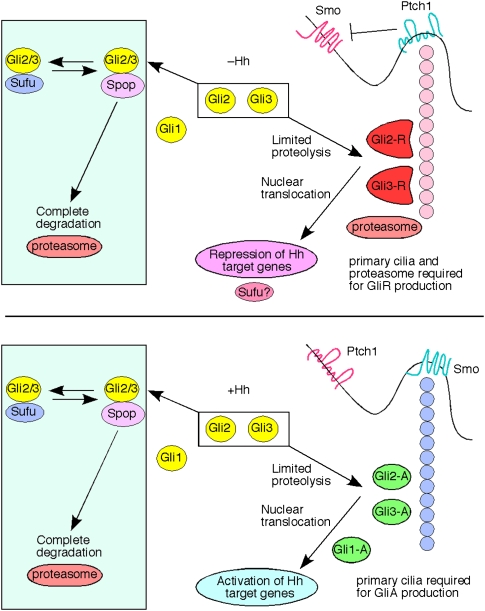Figure 7.
A model of mammalian Hh signaling. Sufu plays a pivotal role in controlling Gli protein levels. Sufu protects full-length Gli2 and Gli3 proteins from Spop-mediated ubiquitination and complete degradation by the proteasome. In this way, Sufu functions as an adaptor to preserve a pool of Gli2 and Gli3 that can be readily converted into Gli activators and repressors. This aspect of Hh signaling is evolutionarily conserved and independent of the primary cilium. In contrast, the primary cilium is required for generating Gli repressors via limited proteolysis in the absence of Hh signaling and converting full-length Gli proteins into activators through unknown mechanisms upon Hh pathway activation. These events occurs downstream from Smo, which translocates to the primary cilium when Hh ligand binds to Ptch1 and removes it from the cilium. How other Hh pathway components or ciliary proteins particulate in cilium-dependent and cilium-independent activity needs to be investigated further.

